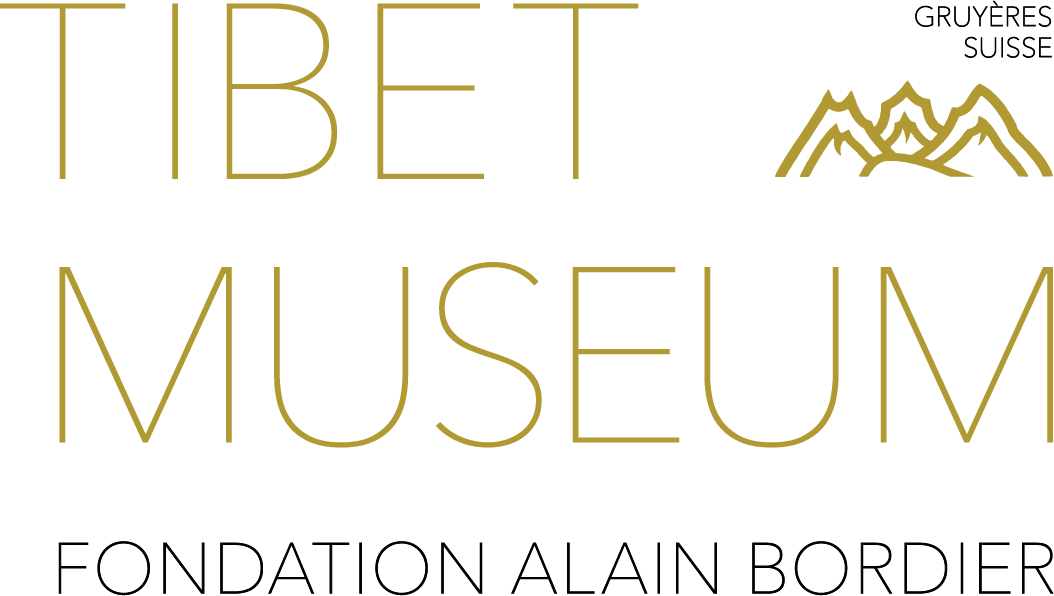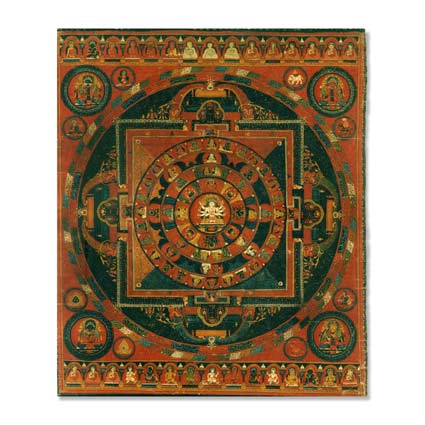
ABP 001
Code: ABP 001
Country: Tibet (south)
Style:
Date: 1400 - 1500
Dimensions in cm WxHxD: 45 x 52
Materials: Glue distemper on cotton
The Pañcarakṣā or “Five Protectresses” consist of Mahāmantrānudhāraṇī – “Conforming to Mantra”, Mahāmāyūrī – “Great Peacock Lady”; Mahāpratitsarā– “Great Follower”, Mahāsāhasra-pramardanī – “Destroyer of Thousandfold Worldsystems”, and Mahāśītavatī – “Lady of Cool Grove”.
This painting represents the maṇḍala or divine abode of the Pañcharakṣā or “Five Protectresses.” Personification of five protective formulas (Skt. dhāraṇī), they are very popular in the Kathmandu valley. Their cult also transpired to Tibet where they met with success, especially in the Sa skya school. At the center is the white eight-armed Mahāpratisarā protecting against sin, disease and evils. To the east is dark blue eight-armed Mahāsāhasra-pramardanī, protecting against evil spirits. To the south is yellow eight-armed Mahāmāyūrī protecting against snake-poison. To the west is red twelve-armed Mahāmantrānudhāraṇī protecting against diseases. To the north is dark green six-armed Mahāśītavatī protecting against disasters, wild animals and poisonous insects.
The top register illustrates the transmission lineage starting with Śākyamuni Buddha and bodhisattva Vajrapaṇi followed by Indian and Tibetan masters of the Sa skya school. The bottom register contains, from left to right, three monks, eight offering goddesses, a yellow and a black Jambhala with a golden Vasudhārā – a triad of Wealth deities– and a Tibetan master, possibly the commissioner of the painting.
The outer rim of the maṇḍala presents the four Guardian Kings along with the seven emblems of the universal monarch and the wish fulfilling cow. Although a Tibetan painting, the deep, full colours associated with the vegetal scrolls patterns, geometric registers and overall style denotes a strong connection with the Newari productions from Nepal.
The piece is featured in this book This book is available at the museum's library Bock, Etienne; Falcombello, Jean-Marc; Jenny Magali, 2022. Trésors du Tibet. Sur les pas de Milarépa. Paris: Flammarion. p. 103
The piece is featured in this book Chandra, Lokesh, 1988. Thangka-Kalendar - August: Vajratara-Mandala. Edition Schangrila. August: Vajratara-Mandala
This book is available at the museum's library von Schroeder, Ulrich and von Schroeder, Heidi, 2009. Tibetan Art of the Alain Bordier Foundation. Hong Kong: Visual Dharma Publications. Pp. 40–41; plate 14

